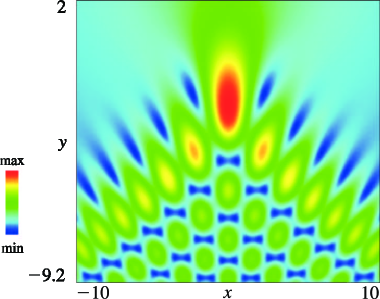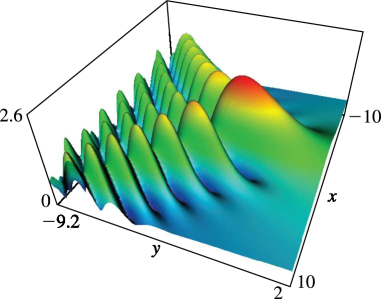Pearcey integral
(0.002 seconds)
1—10 of 13 matching pages
1: 36.2 Catastrophes and Canonical Integrals
2: 36.7 Zeros
3: 36.3 Visualizations of Canonical Integrals
4: 36.6 Scaling Relations
§36.6 Scaling Relations
…5: 36.9 Integral Identities
§36.9 Integral Identities
…6: 36.5 Stokes Sets
7: 36.11 Leading-Order Asymptotics
§36.11 Leading-Order Asymptotics
…8: 36.8 Convergent Series Expansions
§36.8 Convergent Series Expansions
…9: 36.12 Uniform Approximation of Integrals
…
►For example, the diffraction catastrophe defined by (36.2.10), and corresponding to the Pearcey integral (36.2.14), can be approximated by the Airy function when is large, provided that and are not small.
…
►For further information concerning integrals with several coalescing saddle points see Arnol’d et al. (1988), Berry and Howls (1993, 1994), Bleistein (1967), Duistermaat (1974), Ludwig (1966), Olde Daalhuis (2000), and Ursell (1972, 1980).
10: 36.10 Differential Equations
…
►
, cusp:
…




